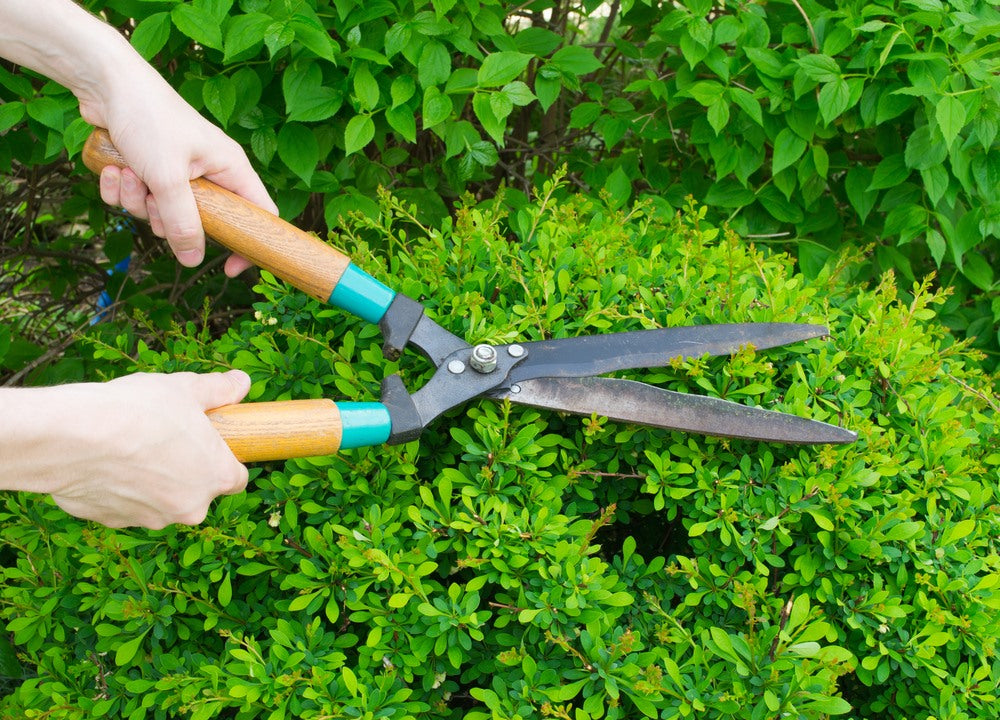Have you ever happened to notice mushrooms growing in the soil of your potted plants? Yup, it can be slightly freaky because we are all used to seeing mushrooms growing on forest floors and not in potted soil.
If you've never seen mushrooms in soil of potted plants then well, you're lucky! But we're here to tell you that it does happen, how to prevent it, and what to do to get rid of them in case they appear near your potted plants.
• Mushrooms Growing on Houseplants? Here's Why

1. Moisture Levels
Mushrooms thrive in damp environments. Excessive watering or poor drainage in potted plants can create a moist environment enabling mushroom growth. Overwatering indoor plants, especially in pots with inadequate drainage, can lead to excess moisture retention in the soil, providing an ideal habitat for mushrooms to sprout.
2. Organic Matter Decomposition
Mushrooms are decomposers, breaking down organic matter in the soil. If the potting mix for indoor plants contains organic material such as bark, compost, or peat moss, it can serve as a food source for mushroom mycelium, leading to mushroom growth in the soil.
So, remember to provide good levels of organic matter along with proper drainage in order to ensure that the soil environment doesn't enable mushrooms growing in it.
3. Fungal Spores
Mushroom spores are ubiquitous in the environment and can easily find their way into potted soil. These spores remain dormant until conditions become favorable for growth. Once introduced into the potting mix, spores can germinate and give rise to mushrooms, especially in humid or moist conditions.
4. Poor Ventilation
Lack of proper airflow around houseplants can contribute to the buildup of humidity in the soil, promoting mushroom growth. Indoor environments with limited ventilation, such as poorly ventilated living spaces or crowded corners with limited air circulation, may encourage the proliferation of mushrooms in potted plants.

5. Potting Mix Composition
The type of potting mix used for indoor plants can influence mushroom growth. Some commercial potting mixes may contain organic materials or compost that are not fully sterilized, potentially harboring mushroom spores or mycelium. Additionally, recycled or reused potting mix may carry fungal spores from previous plantings, increasing the likelihood of mushroom growth.
Buy perfectly balanced Potting Mix with Ugaoo
• How To Avoid Mushrooms Growing in Gardens

1. Proper Watering
Avoid overwatering your houseplants, as excessive moisture in the soil creates an ideal environment for mushrooms to thrive. Water your plants only when the top inch of soil feels dry to the touch, and ensure that the pots have proper drainage holes to allow excess water to escape.
2. Improved Drainage
Use pots with adequate drainage holes to prevent water from pooling at the bottom and causing soil saturation. Consider adding a layer of gravel or broken pottery shards at the bottom of the pots to enhance drainage and prevent waterlogging.
Buy Pots & Planters
3. Good Ventilation
Ensure proper airflow around your houseplants by placing them in well-ventilated areas with adequate air circulation. Avoid crowding plants together, as this can restrict airflow and promote humidity buildup, creating conditions conducive to mushroom growth.
4. Sterile Potting Mix
Use high-quality, sterile potting mix specifically formulated for indoor plants. Sterilized potting mix reduces the risk of introducing fungal spores or mycelium into the soil, minimizing the chances of mushrooms growing in the houseplant soil.
5. Regular Maintenance
Remove any debris, fallen leaves, or organic matter from the surface of the soil to eliminate potential food sources for mushroom growth. Keep the area around the houseplants clean and tidy to discourage fungal colonization.

6. Avoiding Contaminated Soil
Be cautious when reusing potting mix from previous plantings, as it may contain fungal spores or mycelium. Consider replacing old potting mix or sterilizing it before reuse to minimize the risk of introducing contaminants into the soil.
7. Natural Remedies
Some natural remedies, such as sprinkling cinnamon powder or neem oil on the soil surface, may help deter fungal growth and prevent mushrooms from colonizing houseplant soil. These substances have antifungal properties and can act as a deterrent to fungal pathogens.
Buy Neem Oil
• How to Remove Mushrooms from Potted Plants

1. Manual Removal
Carefully pluck out the mushrooms along with their base from the soil surface. Be thorough to remove all visible parts of the mushrooms to prevent further spore release. Also ensure that all roots are successfully extracted and none remain in the soil.
2. Improve Air Circulation
Enhance ventilation around the affected plants to reduce humidity levels in the soil. Place the plants in well-ventilated areas or use fans to improve airflow, which helps discourage fungal growth.
You can also enhance ventilation in soil by simply poking holes into the soil with chopsticks so that the holes are deep enough to ensure good air circulation.
3. Replace Top Layer of Soil
Carefully remove the top layer of soil where mushrooms are growing and replace it with fresh, sterile potting mix. This helps remove any remaining fungal spores or mycelium and reduces the likelihood of mushroom recurrence.
4. Apply Fungicides
If the mushroom infestation is severe or persistent, consider using a fungicidal treatment specifically formulated for indoor plants. Follow the instructions on the product label carefully and apply the fungicide as directed to control fungal growth effectively.

5. Increase Sunlight Exposure
Position the affected plants in areas with sufficient sunlight exposure, as sunlight can help inhibit fungal growth and promote soil drying.
6. Monitor and Prevent Recurrence
Keep a close eye on the potted plants and monitor them regularly for any signs of mushroom regrowth. Continue to implement preventive measures such as proper watering, good ventilation, and sterile potting mix to prevent mushrooms from returning.
















